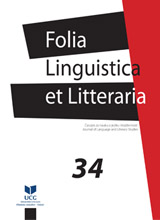Učenje francuskog jezika (L2) i međujezik – studija slučaja
Learning French (l2) and Interlanguage - A Case Study
Author(s): Sonja ŠpadijerSubject(s): Foreign languages learning, Language acquisition
Published by: Filološki fakultet, Nikšić
Keywords: learning L2; error analysis; interlanguage; interlanguage continuum; errors vs. mistakes
Summary/Abstract: During the L2 learning process, students create a system of abstract language rules that allow them to understand and produce L2. Those rules are considered mental grammar (Elis 1997, 33) as well as interlanguage (Interlanguage) (Selinker 1972; 1975). Interlanguage is a stage in the L2 learning process that helps students mentally conceive new knowledge, shapes and structures. The language used by students is not just a result of the difference between the languages they already know and the languages they are learning, but also of the complete language system that has its own rules. Structures which occur within the interlanguage are not arbitrary. The aim of this paper is to describe the characteristics of French spoken by first year students and final year students of French language and literature, to explain what this says about the nature of their knowledge and how their interlanguage differs from the norm of standard French. This is achieved through a study of how the students develop the ability to produce certain grammatical structures. I will describe the mistakes students make and evaluate them through the methodology of L2 Theory of Adoption - SLA (Elis 1997, 16–23). The results of the research are based on the elements that characterize interlanguage of first year and fourth year students and will be used to redefine teaching goals and activities.
Journal: Folia Linguistica et Litteraria
- Issue Year: 2021
- Issue No: 34
- Page Range: 285-310
- Page Count: 26
- Language: Serbian

